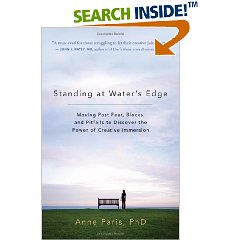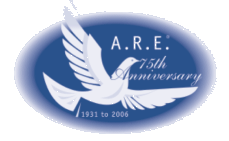| Edited by HENRY REED, Ph.D. |
July 12, 2008
|

|
A New Approach To Igniting and Sustaining Creativity* by Anne Paris, PhD
Mary squirmed in her chair as she continued, “I just don’t know what is wrong with me. Why can’t I just do it? I feel stressed all the time when I’m not writing. ‘I should be writing’, I say to myself, but I don’t. I think, if I just get the laundry done, then I’ll be free to sit down and write the next chapter. But then I don’t. Maybe I need to exercise first, and I go for a run. I get back home, fully intending to sit down at the computer. But I don’t. And all the while I’m feeling bad and stressed about not writing. What is wrong with me? Maybe I’m just lazy. Or maybe unconsciously I don’t really want to write. Or maybe it just means that I’m not really cut out to be a writer. ‘Writers write’, I tell myself. Through thousands of hours of psychotherapy with artists, I have found that most are quite familiar with the experience of being artistically blocked, or of procrastinating and avoiding their creative work. “If only I weren't so distractible” or “I must not really want to succeed” are common complaints I’ve heard. These blocks can lead to non-productivity as well as to more serious problems such as depression and addictions. Until now, most experts have offered behavioral strategies to help artists initiate and sustain their creative process: “set aside a time and place everyday for the creative endeavor” or “tell yourself you can do it” or “you must exercise a great deal of self-discipline.” Structure can certainly help artists to focus and to discipline their time. But many artists do not find the strength to overcome deeply embedded blocks with this advice. “If it were that easy, I'd do it,” they say. New research in neuroscience and contemporary psychological approaches show that these strategies are only part of the answer. Revolutionary understandings in clinical psychology now suggest that healthy interpersonal relationships are the fuel for optimal emotional, cognitive, intellectual, behavioral, and creative functioning. Contrary to how we’ve been taught to value independence and autonomy, this new scientific evidence is showing that we are at our best when we are connected with others. Applying these findings to the secret, internal world of the artist, the capacity to be creative is actually generated by the experience of connectedness with others. When we are feeling frightened or are lacking self-confidence and vitality, we need to look at the state of our relationships, rather than to blame ourselves for being weak and inadequate, or to think that we must somehow find strength and courage from deep within ourselves. We cannot create in a vacuum of isolation: we are helped along in the creative process by certain kinds of emotional support from others that help us to be at our best and to realize our full potentials. When we shift our focus from searching within ourselves to reaching for healthy connections, we will be propelled through the creative process to complete a work of art. To immerse into creativity, we need to feel strong, inspired, and comforted. Rather than existing as static “traits” in our selves, strength, inspiration, and comfort are generated in our relationships with mirrors, heroes, and twins:
Throughout a creative project, you are likely to grapple with core feelings of safety, trust, and hope. When you become aware of how your relationships with others (or lack of relationships) impact your ongoing sense of self, you can then try to elicit more of what you need to carry you through the myriad of emotions involved in the creative process. It is not weak to need others. In fact, being able to create and sustain mutual relationships is the key to our continued growth as artists and as individuals. In the end, it is not really how much willpower or discipline we have that determines our capacity to enter into a creative state. Standing at water's edge, looking at the vast unknown and uncertainty involved in the creative process, it is our relationships with others that will empower or inhibit our dive. ============================ *Dr. Anne Paris is a clinical psychologist who has helped artists along in their creative processes for over 20 years. Her approach, which is based on cutting-edge psychological understandings and research, appreciates the inner world of the artist in a new way and points to the importance of connections with others throughout the creative process. Through this revolutionary approach, she has helped famous, professional, and hobby artists start and sustain their creative process so they could complete a work of art. You can visit her online at www.anneparis.com. Based on the book Standing at Water’s Edge: Moving Past Fears, Blocks, and Pitfalls to Discover the Power of Creative Immersion © 2008 by Anne Paris. Printed with permission of New World Library, Novato, CA To order this book from Amazon.com, click here!
|




